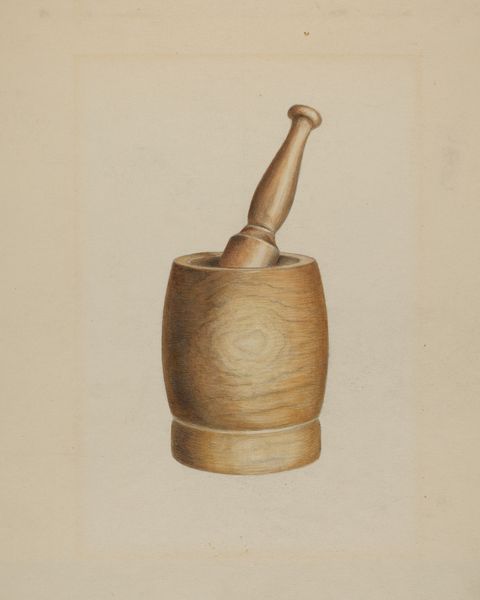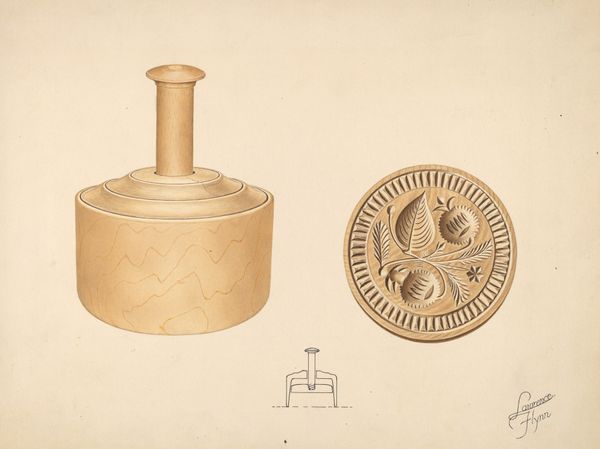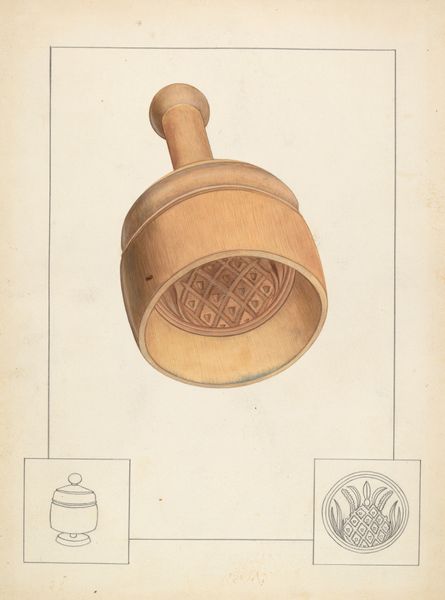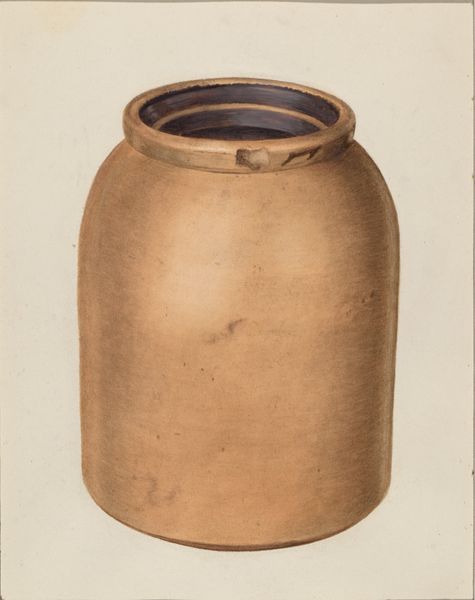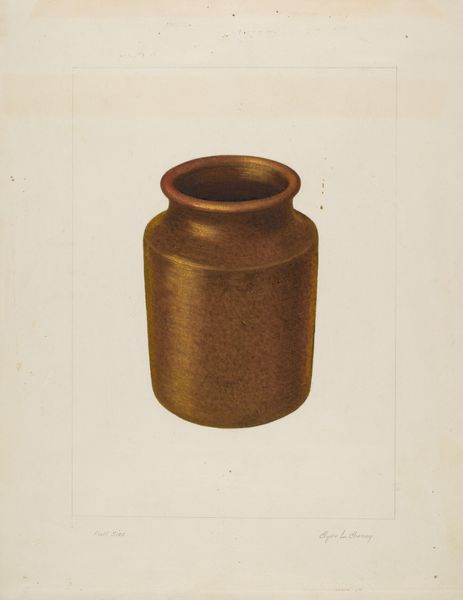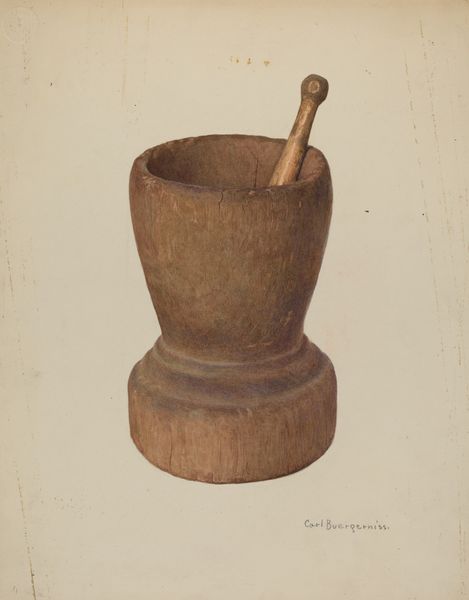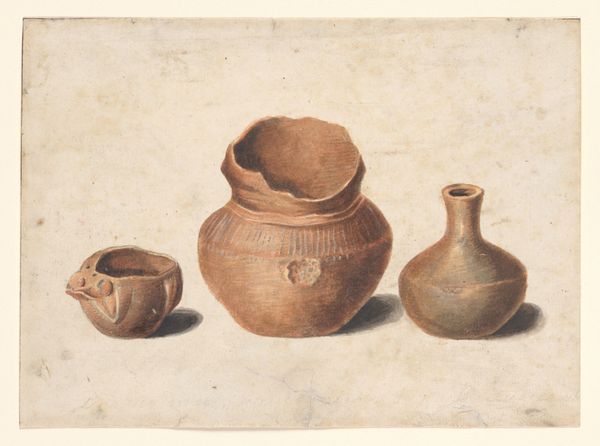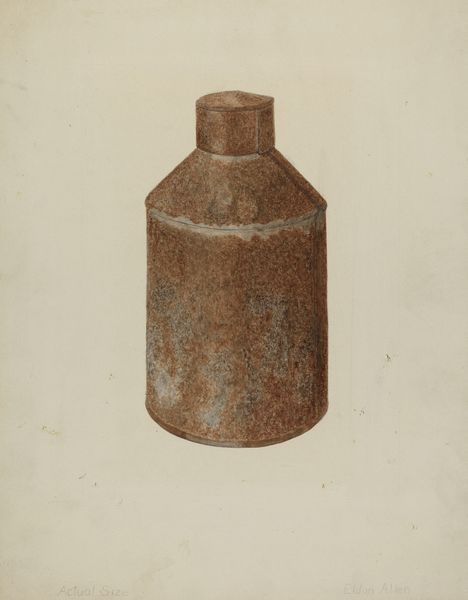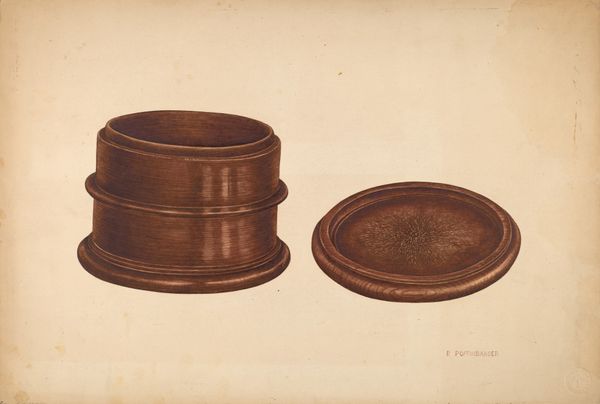
drawing, watercolor, wood
#
drawing
#
watercolor
#
wood
#
watercolor
#
realism
Dimensions: overall: 24.1 x 35 cm (9 1/2 x 13 3/4 in.) Original IAD Object: 5 1/2" high
Copyright: National Gallery of Art: CC0 1.0
Curator: Before us, we have a watercolor and pencil rendering on paper of a Butter Mold dating back to around 1938, skillfully crafted by Wilford H. Shurtliff. Editor: The wood grain captured in the drawing… I find it strangely beautiful and contemplative for something that feels so quotidian. Like a still life, yet meant to be handled, used. Curator: Absolutely, the beauty in the everyday. Notice how Shurtliff depicts the carved botanical details: leaf and flower. The blossom points of the family table perhaps? Food imbued with beauty from preparation through consumption. It shows how closely intertwined aesthetics and basic living once were. Editor: I’m intrigued by the choice of wood as the medium, not only for the physical mold itself but represented so vividly by the artist. It reflects a dependence on local resources, I would expect. Also, the labor... to make an object like this that blends functional requirements with design elevates the butter mold far beyond mere utility, does it not? Curator: It does, the botanical motifs themselves may point to growth and prosperity for the household, and the form provides the means to impress a community. More than a decoration, these molds become carriers of identity and meaning within a close social circle. You imprint both butter and cultural symbols, simultaneously. Editor: So, art inextricably bound to craft, reflecting both personal identity and the local economy… You start to think about distribution, availability, who owned molds like these, how did they get them, where do the source materials come from, and so on…It pulls away assumptions of fine art’s remove. Curator: Exactly, the drawing transforms this piece from a simple utilitarian tool into a statement, an intimate record. It suggests how people find value and connection to their pasts, especially with such attention to surface and the traces of tool making. Editor: Looking closer reveals an honesty—a quiet resistance to the over-production of commodities perhaps? The beauty comes directly from process and purpose, refusing notions of mass manufacture as true progress. Curator: A powerful example then, of how we imprint our culture, values, and identities on even the simplest aspects of daily life, recorded so carefully with pencil and wash. Editor: It's a testament to the stories that can be unlocked from objects that would be too easily passed over. And what this drawing then becomes in the chain of things!
Comments
No comments
Be the first to comment and join the conversation on the ultimate creative platform.


